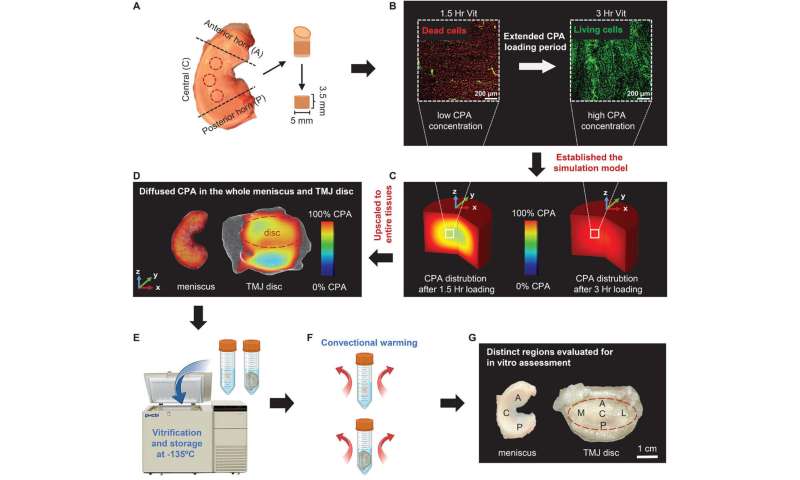Study makes significant contributions toward addressing the shortage of knee meniscus and TMJ disk replacements

The shortage of suitable donor meniscus grafts from the knee and temporomandibular joint (TMJ) impedes treatments for millions of patients. Vitrification offers a promising solution by transitioning these tissues into a vitreous state at cryogenic temperatures, protecting them from ice crystal damage using high concentrations of cryoprotectant agents (CPAs). However, vitrification's success is hindered for larger tissues (>3 mL) due to challenges in CPA penetration.
Dense avascular meniscus tissues require extended CPA exposure for adequate penetration; however, prolonged exposure becomes cytotoxic. Balancing penetration and reducing cell toxicity is required.
To overcome this hurdle, a simulation-based optimization approach has been developed by combining computational modeling with microcomputed tomography (µCT) imaging to predict 3D CPA distributions within tissues over time accurately. The study is published in the journal Advanced Healthcare Materials.
This approach minimizes CPA exposure time, resulting in 85% viability in 4-mL meniscal specimens, 70% in 10-mL whole knee menisci, and 85% in 15-mL whole TMJ menisci (i.e., TMJ disk) post-vitrification, outperforming slow-freezing methods (20%–40%), in a pig model.
The extracellular matrix (ECM) structure and biomechanical strength of vitreous tissues remain largely intact. Vitreous meniscus grafts demonstrate clinical-level viability (≥70%), closely resembling the material properties of native tissues, with long-term availability for transplantation. The enhanced vitrification technology opens new possibilities for other avascular grafts.
More information:
Shangping Wang et al, Viable Vitreous Grafts of Whole Porcine Menisci for Transplant in the Knee and Temporomandibular Joints, Advanced Healthcare Materials (2024). DOI: 10.1002/adhm.202303706
Provided by Clemson University